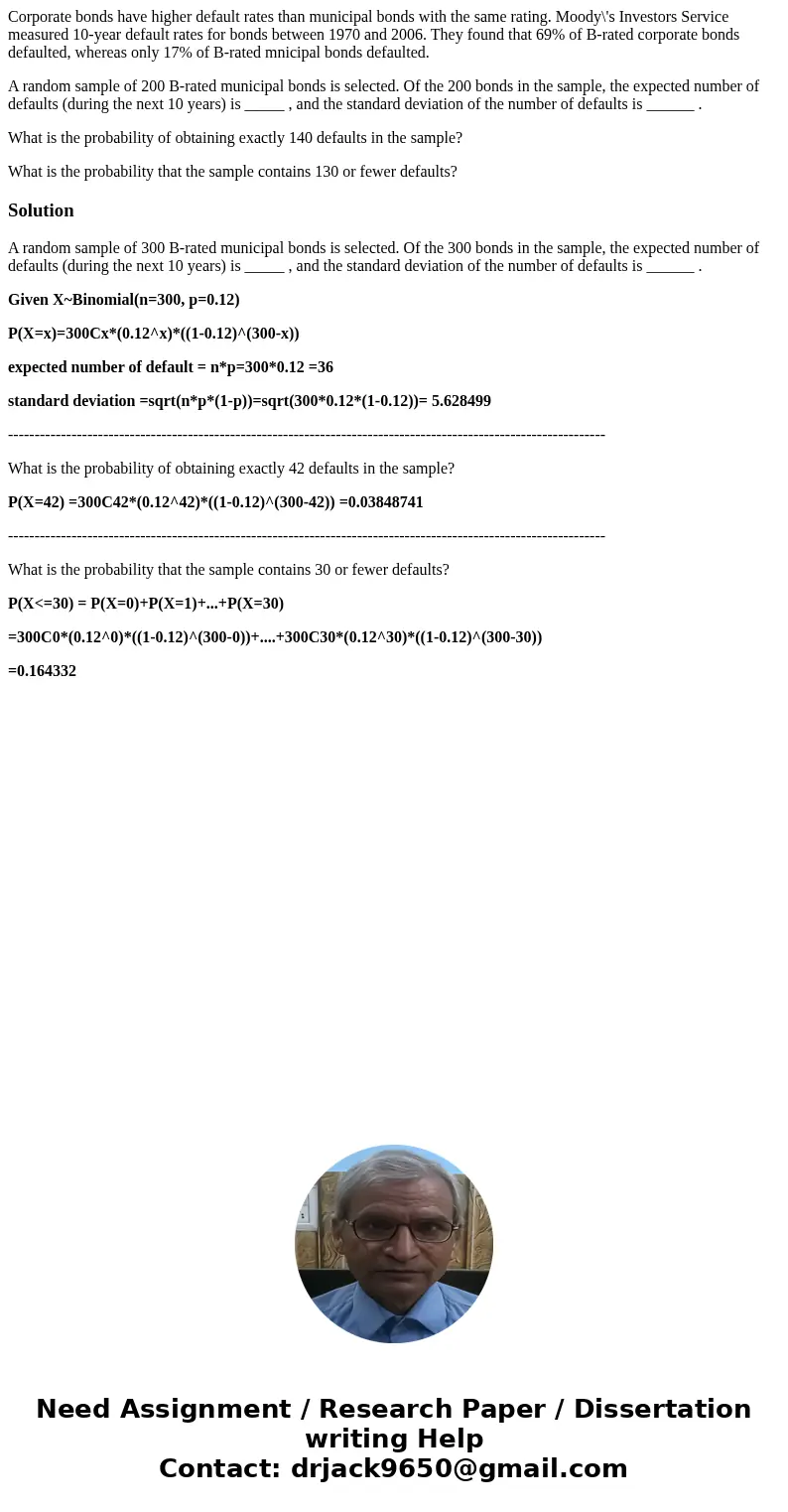Corporate bonds have higher default rates than municipal bon
Corporate bonds have higher default rates than municipal bonds with the same rating. Moody\'s Investors Service measured 10-year default rates for bonds between 1970 and 2006. They found that 69% of B-rated corporate bonds defaulted, whereas only 17% of B-rated mnicipal bonds defaulted.
A random sample of 200 B-rated municipal bonds is selected. Of the 200 bonds in the sample, the expected number of defaults (during the next 10 years) is _____ , and the standard deviation of the number of defaults is ______ .
What is the probability of obtaining exactly 140 defaults in the sample?
What is the probability that the sample contains 130 or fewer defaults?
Solution
A random sample of 300 B-rated municipal bonds is selected. Of the 300 bonds in the sample, the expected number of defaults (during the next 10 years) is _____ , and the standard deviation of the number of defaults is ______ .
Given X~Binomial(n=300, p=0.12)
P(X=x)=300Cx*(0.12^x)*((1-0.12)^(300-x))
expected number of default = n*p=300*0.12 =36
standard deviation =sqrt(n*p*(1-p))=sqrt(300*0.12*(1-0.12))= 5.628499
-----------------------------------------------------------------------------------------------------------------
What is the probability of obtaining exactly 42 defaults in the sample?
P(X=42) =300C42*(0.12^42)*((1-0.12)^(300-42)) =0.03848741
-----------------------------------------------------------------------------------------------------------------
What is the probability that the sample contains 30 or fewer defaults?
P(X<=30) = P(X=0)+P(X=1)+...+P(X=30)
=300C0*(0.12^0)*((1-0.12)^(300-0))+....+300C30*(0.12^30)*((1-0.12)^(300-30))
=0.164332

 Homework Sourse
Homework Sourse